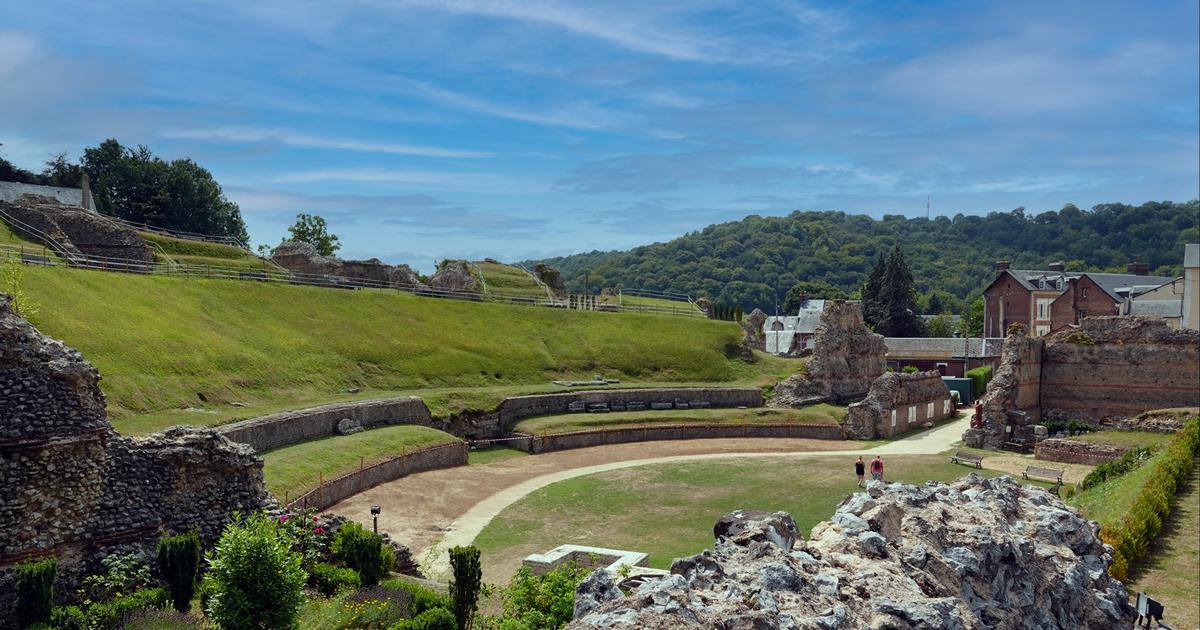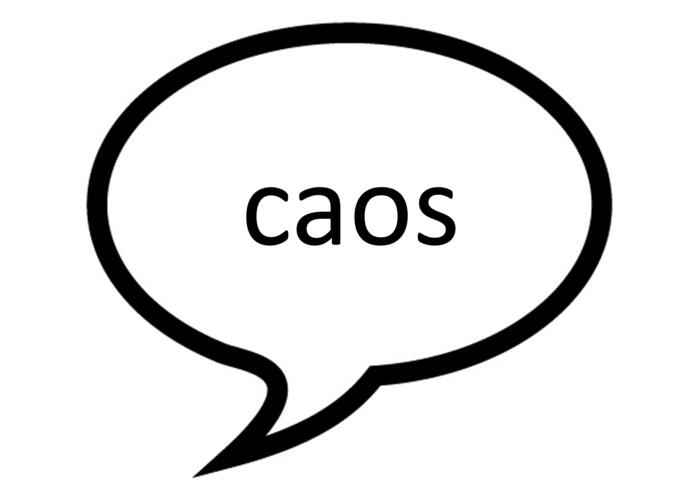Lillebonne is not one of those cities whose past emerges from the smallest pores of its streets and squares.
The Normandy conurbation of Seine-Maritime, located between Rouen and Le Havre, is nonetheless home to its small string of ancient monuments.
Here the tired dungeon of a vanished medieval castle, there a late-Gothic church weathered by the centuries.
And between the two, the still spectacular remains of an astonishing Roman theatre.
Its stones form the emerged part of Juliobona, the ancient Roman city is now determined to find a place on the map of Gaul.
To discover
YOUR COMMUNE - The results of the second round of the presidential election in your area
Discover the “Best of the Goncourt Prize” collection
Read alsoThe Scythian treasures of a Ukrainian museum looted by the Russian army
A number of fragments are crowded together tightly between the walls of the municipal museum of Lillebonne: sculpted limestone blocks, displays of figurines bearing the effigy of ancient deities and other funerary objects, in glass, silver and terracotta, offer visitors a glimpse of this Gallo-Roman city.
The accumulation is edifying whereas the site, founded on the territory of Calètes, ignites the imagination less than Lugdunum or even Alésia.
Wrongly: the discreet Juliobona was one of the most important ports in northern Gaul.
A fine heritage for a city now located more than three kilometers away from the river.
Plan of the remains of the center-west of Juliobona above the plan of the city of Lillebonne, with the hypothetical Roman forum, in the center, and the theater, in the west.
The ancient port was located at the southeast corner of this sector.
snoeck
“The landscape was radically different then,”
says Jonas Parétias, with that mysterious half-smile that is typical of specialists.
Doctor fresh out of the sciences of Antiquity, the new head of studies in archeology with the community of agglomeration Caux Seine is in the image of the heritage ambition of Lillebonne: full of drive.
"The river was channeled in the 19th century, which substantially changed the configuration of this part of the Seine",
he specifies, pointing to the topographical model at the entrance to the museum.
In the first centuries of our era, the city closely embraced the waves of the Seine, whose ancient estuary then went up to its port.
The flow of goods going and coming from the Channel to Lutèce passed through this famous trading post, nestled between the sea and the river.
The obvious is obvious: the location of Juliobona was strategic.
He is slowly getting back to it.
At least culturally.
Read alsoBuilt during the Crusades, the old altar of the Holy Sepulcher resurfaces
Find the ancient city
Not much remains of the port swarming of yesteryear.
It has been superseded by new, more down-to-earth animations.
At the end of March, a meaty aroma amalgamated with the acrid exhalation of the tractors thus hovered over Place Félix Faure, in the center of Lillebonne, after the holding of the annual cattle fair.
The event was particularly resounding: it had been two years since it had been able to take place, due to the pandemic.
On the other hand, the situation had not hampered other activities.
Thus, a few months earlier on the same square, the shrewd movement of the shovels and trowels of the archaeologists preceded the arias of the calves, cows and goats of the fair.
In July 2021, a programmed excavation campaign was organized in the center of Lillebonne, opposite the Roman theatre.
Organized in the heart of the ancient city of Juliobona, the operation unearthed various ancient structures including a possible public building near the theatre.
Caux Seine agglomeration
In July, a section of car park located in the center of the square, between the municipal museum and the ruins of the ancient theatre, was carefully examined.
Supervised by Jérôme Spiesser, the previous archeology study manager, the programmed excavation operation provided an unusual animation for local residents.
It also allowed specialists to uncover the lineaments of some new structures of ancient Juliobona.
"The site revealed a probable habitat as well as a wide wall, 1.8 meters high, dated from the end of the 1st or the beginning of the 2nd century, having perhaps belonged to a poorly identified Roman public building"
, specifies Jonas Parétias, in front of the sector excavated and covered since then with a layer of gravel.
All has not yet been discovered in the
Read alsoThe getaway of the week: time travel to Alésia, with the myth of the Gaul
The field of study is vast.
At its height, at the end of the 2nd century, Juliobona extended over nearly thirty hectares and housed, perhaps, up to 10,000 inhabitants, according to the highest estimates;
more than the current population of Lillebonne.
The layouts of an aqueduct, necropolises and northern and southern sections of the late Roman enclosure are documented.
At least two bathing establishments were within the walls, between opulent
domus
and a few ill-defined public buildings.
The outlines of temples also seem to point to the ends of their walls.
In the midst of these disparate elements, one question remains unresolved to this day: how to explain the sudden decline of the city?
The treasure known as the tomb of Marcus, was discovered in 1864 in the necropolis of the White Coast, east of Juliobona.
Dated from the end of the 2nd V.Bruneau/Juliobona/Snoeck
Towards the end of the 3rd century, Juliobona lost its status as chief town in favor of Rotomagus – Rouen.
A large calcined layer, dating from this same period, is found on both sides of the city, testimony to a monster fire that devastated the site.
Was it a devastating accident, or the work of bagaudes, named after the troops of brigands who then ravaged the north of Gaul?
A sacking of the city by German, Frankish or Saxon pirates is not excluded either.
Unless it is a collateral devastation of the civil war which opposes, from 293 to 296, the imperial power to the usurper Carausius, which rages in these regions.
The decisive key to this enigma may be waiting to be discovered, somewhere under the cobblestones of Lillebonne.
Read alsoIn pursuit of fake treasures
Revive the ancient port of the Seine
The various researches on the past of the city had started with fanfare at the beginning of the 19th century, bringing out a part of Juliobona.
Its theatre, of course, but also a host of exceptional remains, such as a so-called “deer hunting” mosaic.
It is kept in the Antiquities Museum of Rouen, like many other treasures of the site.
This is not the case with the Apollon de Lillebonne.
A masterpiece of the antiquities of Juliobona, this admirable statue in gilded bronze is found exiled even further afield.
"It's a bit like our own Mona Lisa",
slips with emotion Élise Cousin, the head of the museums of Caux Seine agglomeration, in front of a cardboard effigy of the sculpture presented in a corner of the municipal museum.
The paper silhouette recalls a heartbreaking absence;
Preserved in the Louvre, the original Apollo is currently on display in Lens, as part of the
Rome exhibition.
The City and the Empire
.
The Lillebonne Apollo.
Discovered in 1823, this 1.98 meter gilt bronze statue, dating from the 3rd century, was acquired in 1853 by the Louvre Museum.
Bridgeman Images
The absence of this Apollonian Mona Lisa from Lillebonne did not affect the implementation of an all-out promotion program for old Juliobona.
Place Sadi Carnot, in front of Notre-Dame de Lillebonne, the traces of an old portico sheltering Roman stalls as well as the wall of a hypothetical basilica could identify the forum of the ancient city.
The nerve center of Roman public life, this space has been redesigned accordingly and is once again used today as a meeting place for the inhabitants of Lille.
Other facilities should better indicate different sites of the city: a
domus
, the public baths, the seafront. A scenic route, a conservation center as well as
As touristic as it is scientific, the Juliobona development project seeks to reinvigorate the city's ancient and port past.
It is also lucky not to have to suffer – as in the Transalpine South – from direct competition from other major sites in Roman Gaul.
“We not only want to rely on the renewal of knowledge about Juliobona, but also to participate in it,
assures Élise Cousin.
We seek to better understand its monuments through a dedicated collective research program, which has mobilized around fifty researchers since 2021.”
As for the Lillebonne Apollo, a contemporary reinterpretation of the statue should see the light of day in the coming months.
The Norman Arlesian will then return to good port, symbolically at least.
SEE ALSO
- Brittany: a Second World War bunker transformed into a bed and breakfast







/cloudfront-eu-central-1.images.arcpublishing.com/prisa/56FQEM4G6NDS5LIUHQJBCIVXEI.jpeg)